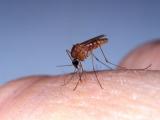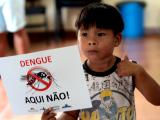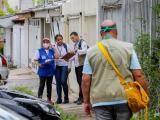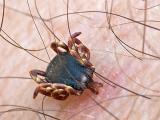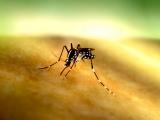Jun 17, 2010 (CIDRAP News) The number of dengue virus infections detected in returning US travelers has risen sharply in recent years, probably reflecting both larger epidemics abroad and increased monitoring at home, the Centers for Disease Control and Prevention (CDC) reported today.
An average of 244 confirmed and probable travel-related dengue cases were identified annually by CDC surveillance systems from 2006 through 2008, compared with only 33.5 cases annually between 1990 and 2005, the CDC said in the Jun 18 Morbidity and Mortality Weekly Report (MMWR).
Most of the increase probably resulted from the 2003 addition of dengue reporting to the CDC's ArboNET surveillance system, which supplements an older system maintained by the CDC Dengue Branch (CDCDB), the agency said. But it said the rising tide also reflects "substantial increases in dengue incidence throughout subtropical and tropical areas of the world, including the Americas."
Reports of US dengue cases may continue to increase, since, as the report noted, the CDC added the mosquito-borne disease to the list of nationally notifiable diseases in January.
Travelers who come home with dengue infections could trigger localized outbreaks if they are bitten by Aedes species of mosquitoes while carrying the virus, the CDC said. Such species, mainly Ae aegypti and Ae albopictus, are endemic in some southeastern areas of the country.
Dengue is caused by four related viruses (dengue types 1-4). The main symptoms include fever, headache, pain behind the eyes, muscle and bone pain, rash, and mild bleeding (such as from the nose and gums), according to the CDC.
A more severe form of the disease is dengue hemorrhagic fever, which can lead to circulatory failure and death. However, many dengue infections cause no or only mild symptoms. No vaccine or specific treatment is available.
The CDC said 574 probable and 158 confirmed dengue cases were identified from 2006 through 2008, for a total of 732. These included 596 cases reported through the ArboNET system and 136 reported through the CDCDB. Both are passive systems, relying on healthcare providers and health agencies to report infections. Cases were classified as probable if the patient had elevated dengue antibodies but the virus wasn't tested for or detected.
Of 732 cases reported, 318 patients (43%) were hospitalized and 1 died, the report says. Clinical syndromes included uncomplicated fever in 429 (59%) cases, dengue hemorrhagic fever or dengue shock in 99 (14%), dengue fever or "dengue fever with hemorrhage" in 66 (9%), unknown in 102 (14%), and "other" in 36 (5%).
A history of travel was reported by 649 of the 732 patients, the CDC said. Specific travel information was gathered from 613 of these, of whom 43% had traveled to the Caribbean; 34% to Mexico, Central America, or South America; 21% to Asia and the Pacific; and 2% to Africa. The top three countries visited in the 2 weeks before illness onset were the Dominican Republic, 20%; Mexico, 9%; and India, 7%.
One patient, from Texas, had no recent travel history and might have contracted the disease at home, the CDC said. Indigenous transmission of dengue has been documented several times since 1980 in Texas and has been seen in recent months in Florida, the report notes.
To lower the risk of dengue infection, travelers to tropical areas should take measures to avoid mosquitoes, the CDC said. Preventive steps not only help the traveler, but also reduce the chance of bringing the virus into US regions where mosquitoes could spread it.
The CDC said its numbers are subject to underreporting because they are based on passive surveillance and because the ArboNET data reflect the results of several different diagnostic tests from private labs.
CDC. Travel-associated dengue surveillanceUnited States, 2006-2008. MMWR 2010 Jun 18;59(23):175-9 [Full text]
See also:
May 20 CIDRAP News story "Florida dengue case prompts alerts for clinicians, residents"

